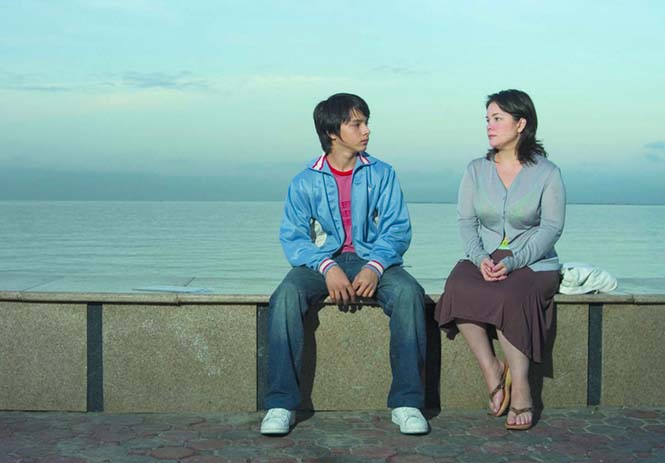Terrorist groups invaded Marawi City in southern Philippines in 2017; and even if they’ve been driven out of the city, the place remains in tatters now (no thanks to various issues – e.g. incompetence of the government, cultural issues affecting the rebuilding, etc).
Truth be told, the city has been visited and revisited by many (usually outsiders) to tell and retell what happened there. And this is what “A House in Pieces” by Jean Claire Dy and Manuel Domes – BASICALLY – does.
Now, is this revisit merited?
PROS
- Here’s another take at Marawi city’s destruction; and yes, it’s still-dilapidated situation years and years after the siege that happened in 2017, highlighting how the Maute terrorist group aren’t the only “problematic” group here, but ditto a government unable to do something about the dire situation there.
- Snippets in the lives of people who continue to suffer.
- Beauty in chaos, in the mundane, etc, e.g. that shot from inside a destroyed house, affording us a look at a destroyed tower/post/pole.
- Kudos to the sound designer (Vensan Mazmanyan). The “continuity” may not be apparent to some, but if you listen really closely, you can see how the sounds “group” the film’s issues into “sets”. This is admirable for me.
- Kudos, too, to the cinematography (Manuel Domes, with the help of Jean Claire Dy) that – when it hits the mark – can be truly breathtaking.
CONS
- The film tells a story already told before. Many times before, in fact.
- The lack of a newer perspective makes this too… generic. There are still many stories not told in Marawi; discovering these would have made just-as-interesting a film. As FYI: there are some attempts to do this, such as in the telling of the stories of those who already returned. But that they’r just part of the bigger story that still focused on what others already tackled even more effectively limits their exposition.
- Perhaps it’s just me, but some shots seemed… amateurish, e.g. that pasting of the poem at the very start reminded me of what you see when you type “motivational quotes” in Google Images. This is somewhat disconcerting because you know the people behind this film can take good shots – e.g. check the B rolls while in the evacuation center in Iligan.
- There’s also this seeming “manipulation” – e.g. see the slaughter of the chook for the “shock factor”.
- Again, perhaps it’s just me, but the cliché dependence is… too obvious, e.g. caged pigeons/doves in Marawi City; that handcuff on the cage; the kid playing with a shooting game on the tablet; etc.
- Some “leading” shots – e.g. talking about the cobra to talk about invasion; that woman in the van singing “never knew that it would go so far” (Dan Byrd’s “Boulevard”); etc.
- This seeming detachment from the subject matters – e.g. you don’t enter the birdcage, you just view it (with the filmmakers) from outside; the locals spoke Filipino, when (Id argue) they would have been able to express themselves more in their own tongue/s; etc.
- The “leading” questions of the interviewer – e.g. in one scene, you can hear her ask “Isang poso lang (Only one water pump)?”, pre-empting the interviewees answers.
- It doesn’t know when to stop – i.e. I reached some points while watching it when I started thinking if they’re just belaboring some points.
IN THE END
As stated, this subject isn’t actually new – e.g. “The ruins of Marawi” by S. Petersmann and H.C. Ostermann for DW News; “Women Warriors” by Sandra Aguinaldo for GMA Public Affairs; “Battle for Marawi” from RT Documentary; etc.
But yes, this is a subject that continues to be of interest; should continue to be such. Not only because the place remains destroyed even now; but because many stories haven’t been told from there.
Now… if only filmmakers center their stories more, I’d say they’d be able to make a more compelling story. But… that’s just me.
“A House in Pieces” is part of the 17th edition of Cinemalaya Philippine Independent Film Festival, running until September 5 ktx.ph (https://www.ktx.ph/).

































































































